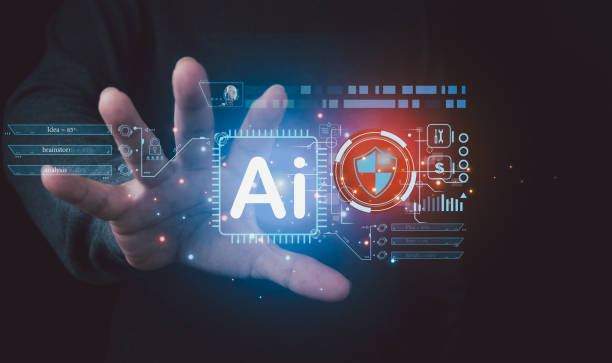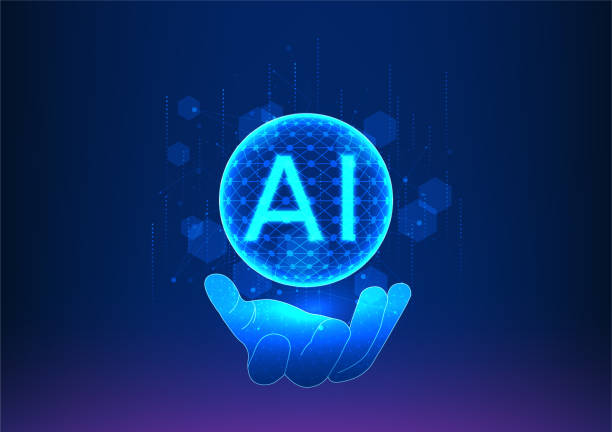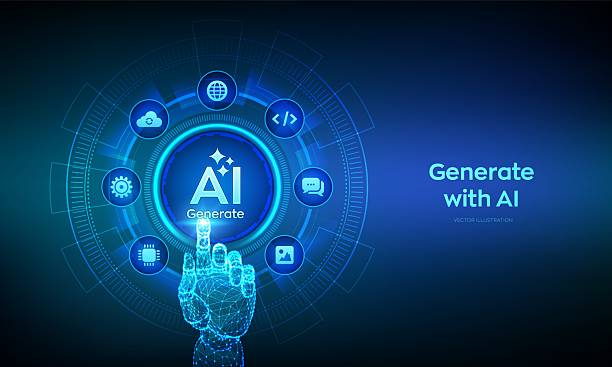Introduction to AI Robots: What They Are and Their History

Introduction to AI Robots: What They Are and Their History
#Artificial_Intelligence (AI) and robotics are two distinct but related fields in computer science.
#AI_Robot is essentially a machine that, using artificial intelligence algorithms, is capable of performing tasks that usually require human intelligence.
These tasks can include learning, reasoning, problem-solving, perception, and interacting with the environment.
The history of AI robots dates back to decades ago when researchers first began developing systems that could think and act independently.
Early examples include ELIZA, a natural language processing program developed in the 1960s.
Today, AI robots are used in a wide range of industries, from manufacturing and healthcare to customer service and finance.
The evolution of #AI_Robot has not only been influenced by hardware advancements (such as faster processors and more advanced sensors) but is also heavily dependent on advances in machine learning algorithms and neural networks.
AI robots, leveraging these technologies, are capable of analyzing data, identifying patterns, and making intelligent decisions.
For more information about artificial intelligence, you can visit the Artificial Intelligence on Wikipedia page.
Are you losing business opportunities because of an outdated website? With Rasaweb, solve the problem of not attracting potential customers through your website forever!
✅ Attract more high-quality leads
✅ Increase brand credibility in the eyes of customers
⚡ Get a free consultation on corporate website design
Main components of AI robots: hardware and software
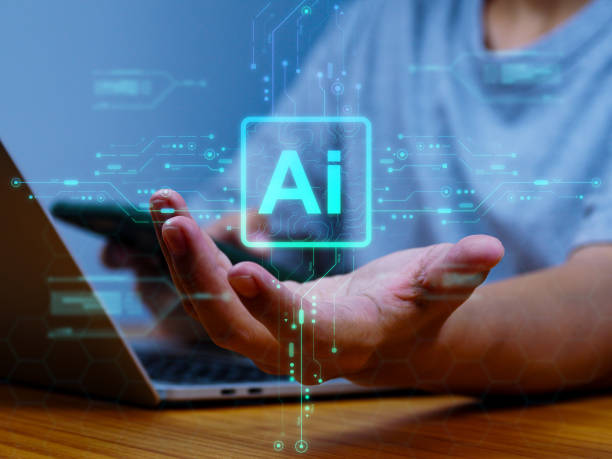
Main components of AI robots: hardware and software
An AI robot consists of two main parts: hardware and software.
Hardware includes the physical components of the robot such as processors, sensors, motors, and actuators.
Processors are responsible for processing data and executing AI algorithms.
Sensors collect information about the surrounding environment, such as images, sounds, temperature, and pressure.
Motors and actuators allow the robot to move in the environment and interact with it.
Software includes AI algorithms, machine learning models, and applications that control the robot’s operation.
#AI algorithms allow the robot to learn, reason, and decide.
Machine learning models allow the robot to learn from data and improve its performance.
Applications allow the robot to perform specific tasks, such as facial recognition, language translation, and self-driving.
Communication between hardware and software is established through an operating system and drivers.
The operating system is a software platform that enables the execution of programs and management of hardware resources.
Drivers are software that facilitates communication between the operating system and the hardware.
AI robots use these components to perform various tasks.
For example, an industrial robot may use sensors to detect defective parts, motors to move parts, and AI algorithms to optimize the production process.
An AI robot in medicine can be used to assist surgeons, care for patients, and diagnose diseases.
An AI robot in customer service can be used to answer questions, solve problems, and provide support.
Types of AI Robots Based on Application and Function
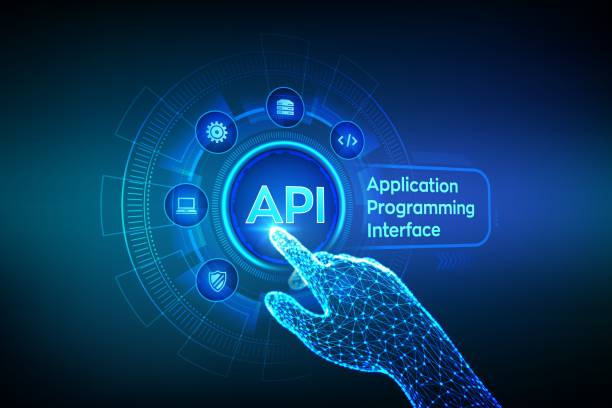
Types of AI Robots Based on Application and Function
AI robots can be divided into different categories based on application and function.
Some of the most common types of AI robots include:
- Industrial Robots These robots are used in factories and other industrial environments to perform repetitive and dangerous tasks.
- Service Robots These robots are designed to provide services to humans, such as cleaning, caring for the elderly, and providing information.
- Medical Robots These robots are used in hospitals and other medical centers to assist surgeons, care for patients, and diagnose diseases.
- Military Robots These robots are used in the military to perform various tasks, such as reconnaissance, bomb disposal, and combat.
- Space Robots These robots are used for space exploration and scientific research.
In addition to this categorization, AI robots can also be classified based on their level of intelligence.
Some robots are only capable of performing simple tasks, while others can learn, reason, and make complex decisions.
AI robots with advanced capabilities are capable of performing tasks that were previously only possible by humans.
For example, AI robots can write text, compose music, and even create art.
| Robot Type | Application | Example |
|---|---|---|
| Industrial | Performing repetitive and dangerous tasks in factories | Car production line robots |
| Service | Providing services to humans | Cleaning robots, nurse robots |
| Medical | Assisting surgeons, caring for patients | Surgical robots, pharmacist robots |
| Military | Performing dangerous tasks in the military | Reconnaissance robots, bomb disposal robots |
| Space | Exploring space and conducting scientific research | Mars rovers, satellite maintenance robots |
Applications of AI Robots in Various Industries
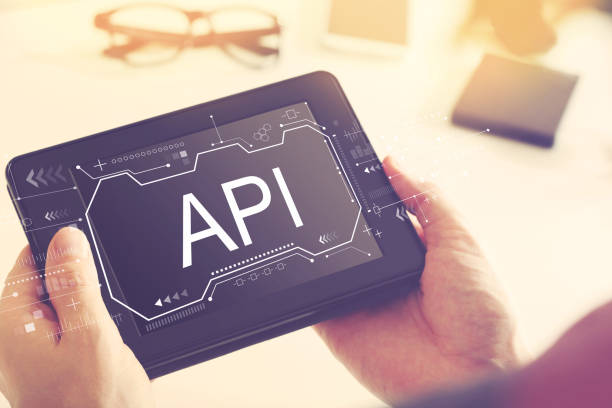
Applications of AI Robots in Various Industries
AI robots are currently used in a wide range of industries, including:
- Manufacturing AI robots can be used to perform repetitive and dangerous tasks in factories, such as welding, painting, and assembly.
- Healthcare AI robots can be used to assist surgeons, care for patients, and diagnose diseases.
- Customer Service AI robots can be used to answer questions, solve problems, and provide support.
- Finance AI robots can be used to detect fraud, manage investments, and provide financial advice.
- Transportation AI robots can be used for self-driving, delivering goods, and managing traffic.
With the advancement of technology, the applications of AI robots in various industries are expected to increase.
AI robots have the potential to revolutionize the way things are done.
AI robots can help companies become more efficient, reduce costs, and provide better products and services.
AI robots can also help humans have a better life, by performing dangerous and repetitive tasks, allowing us to focus on tasks that are more creative and meaningful.
For example, in the manufacturing industry, AI robots can assemble parts with high accuracy and speed, check the quality of products, and reduce waste.
In the healthcare industry, AI robots can assist surgeons in performing complex operations, improve patient care, and diagnose diseases in the early stages.
In the customer service industry, AI robots can answer customer questions 24/7, solve their problems, and improve the customer experience.
AI robots in finance can be used to identify suspicious patterns, prevent fraud, and provide personalized investment recommendations.
In the transportation industry, AI robots can drive vehicles automatically, optimize traffic, and increase road safety.
How much does it cost you to lose business leads due to a non-professional website? Solve this problem forever with professional corporate website design by Rasaweb!
✅ Increase the credibility and trust of potential customers
✅ Easier attraction of new business leads
⚡ Get a free consultation now!
Advantages and Disadvantages of Using AI Robots

Advantages and Disadvantages of Using AI Robots
The use of AI robots has many advantages and disadvantages.
Some of the main advantages include:
- Increased Efficiency AI robots can perform tasks more accurately and faster than humans.
- Reduced Costs AI robots can reduce labor costs and increase productivity.
- Improved Safety AI robots can perform dangerous tasks and improve workplace safety.
- 24/7 Availability AI robots can work 24/7, without the need for rest or holidays.
- Improved Quality AI robots can perform tasks with high accuracy and without errors, which leads to improved quality of products and services.
Some of the main disadvantages of using AI robots include:
- High Initial Cost Purchasing and deploying AI robots can be costly.
- Need for Expertise Setting up, maintaining, and programming AI robots requires expertise.
- Job Loss The use of AI robots can lead to job loss for some workers.
- Ethical Concerns The use of AI robots raises important ethical questions about accountability, privacy, and discrimination.
- Dependence on Technology Over-reliance on AI robots can create vulnerability to technical problems and cyber attacks.
Overall, the use of AI robots has great potential to improve human life and advance various industries.
However, it is necessary to consider the disadvantages and challenges associated with this technology and to provide solutions to reduce its negative effects.
AI robots are a powerful tool that should be used properly to benefit from its advantages and avoid its risks.
Challenges of Developing and Implementing AI Robots

Challenges of Developing and Implementing AI Robots
Developing and implementing AI robots faces numerous challenges.
Some of the most important of these challenges include:
- Data Scarcity Machine learning algorithms require a lot of data to function properly, and collecting and preparing this data can be difficult and costly.
- Ethical Problems The use of AI robots raises important ethical questions about accountability, privacy, and discrimination.
- Security Issues AI robots can be vulnerable to cyber attacks, and hacking them can have serious consequences.
- Hardware Limitations Building robots capable of performing complex tasks requires advanced and expensive hardware.
- Resistance to Change Acceptance of AI robots in some industries may face resistance from workers and managers.
To overcome these challenges, we need to invest in research and development, develop ethical standards, strengthen cyber security, improve hardware, and train the workforce.
AI robots must be designed and implemented to be safe, reliable, and compatible with human values.
AI robots should not replace humans, but should be used as a tool to help humans perform their tasks.
AI robots should be designed in such a way that they are not misused and used for illegal purposes.
For example, in the field of data scarcity, synthetic data collection and transfer learning methods can be used to solve this problem.
In the area of ethical issues, the use of AI robots can be limited by enacting laws and regulations, and the rights and privacy of individuals can be protected.
In the area of security issues, AI robots can be protected against cyber attacks by using encryption and threat detection methods.
In the area of hardware limitations, more advanced hardware can be designed and produced by investing in research and development.
In the area of resistance to change, workers and managers can be familiarized with the benefits of using AI robots and prepared to accept this technology through training and information.
The Future of AI Robots: Predictions and Trends
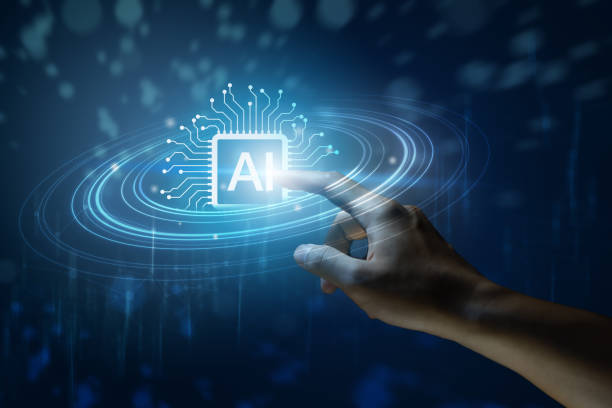
The Future of AI Robots: Predictions and Trends
The future of AI robots looks very bright.
With the advancement of technology, AI robots are expected to be able to perform more complex tasks and be used in more industries.
Some of the main trends in the field of AI robots include:
- Deep Learning Deep learning algorithms allow AI robots to learn from a lot of data and improve their performance.
- Natural Language Processing Natural language processing allows AI robots to understand human language and communicate with humans naturally.
- Computer Vision Computer vision allows AI robots to understand images and identify objects.
- Internet of Things The Internet of Things allows AI robots to communicate with other devices and share information.
- Collaborative Robots Collaborative robots are designed to work alongside humans and can assist them in performing various tasks.
By combining these trends, AI robots are expected to be able to perform tasks in the future that were previously only possible by humans.
AI robots can revolutionize various fields such as healthcare, education, manufacturing, customer service, and transportation.
AI robots can help us have a better life and build a better world.
For example, in the future we can see AI robots working alongside us as doctors, teachers, drivers, and workers.
AI robots can help us diagnose diseases earlier, receive better education, produce better quality products, provide better services, and have safer transportation.
AI robots can help us solve big challenges like climate change, poverty, and disease.
The Impact of AI Robots on the Labor Market

The Impact of AI Robots on the Labor Market
The impact of AI robots on the labor market is a complex and controversial issue.
On the one hand, AI robots can lead to job loss for some workers, especially in jobs that are repetitive and automatable.
On the other hand, AI robots can create new job opportunities, especially in areas such as robot development, maintenance, and programming.
AI robots can also help increase productivity and economic growth, which leads to the creation of new jobs in other industries.
To reduce the negative effects of AI robots on the labor market, it is necessary to take measures to train and retrain workers, create social safety nets, and support entrepreneurship.
Workers must learn new skills that are needed in the age of automation, and governments must create programs to support workers who lose their jobs.
Entrepreneurship can also play an important role in creating new jobs and adapting to labor market changes.
Ultimately, the impact of AI robots on the labor market depends on how this technology is managed.
If AI robots are managed properly, they can help increase prosperity and advance society.
If AI robots are not managed properly, they can lead to inequality and economic instability.
AI robots are a powerful tool that should be used properly.
| Industry | Potential Impact of AI Robots | New Job Opportunities |
|---|---|---|
| Manufacturing | Increased automation and reduced need for human labor on production lines | Robotics engineering, robot programming and maintenance, data specialists |
| Customer Service | Replacing human support with chatbots and automated response systems | Chatbot developers, AI specialists, customer experience analysts |
| Transportation | Automating driving and reducing the need for human drivers | Self-driving car engineers, cyber security specialists, traffic data analysts |
| Healthcare | Assisting surgeons and nurses, diagnosing diseases, and caring for patients | Medical robot technicians, AI specialists in medicine, medical data analysts |
Did you know that customers’ first impression of your company is your website? Multiply the credibility of your business with a powerful corporate website from Rasaweb!
✅ Exclusive and eye-catching design tailored to your brand
✅ Improved user experience and increased customer acquisition
⚡ Get a free consultation!
Key Points for Selecting and Using AI Robots

Key Points for Selecting and Using AI Robots
Selecting and using AI robots is an important decision that should be made carefully and with planning.
Some of the key points to consider include:
- Determine Needs Before choosing an AI robot, you should carefully determine your needs.
What tasks do you want the robot to do? What is your budget? What are your expectations for the robot’s performance? - Research and Comparison Before buying an AI robot, you should do research and compare different models.
Check the features, price, and performance of each model and choose the model that is the best option for your needs. - Training and Maintenance After purchasing an AI robot, you should receive the necessary training and maintain the robot properly.
Training helps you use the robot properly and avoid problems.
Regular maintenance also helps to increase the robot’s lifespan. - Security AI robots should be properly secured to prevent abuse and cyber attacks.
Choose a strong password, keep the robot’s software up to date, and avoid installing suspicious programs. - Ethics In using AI robots, you must observe ethical principles.
Do not use the robot for illegal and unethical purposes, and protect the rights and privacy of individuals.
By following these tips, you can choose a suitable AI robot and benefit from its advantages.
AI robots can help you become more efficient, reduce costs, and provide better products and services.
AI robots can also help you have a better life and build a better world.
Ethical and Legal Issues Related to AI Robots

Ethical and Legal Issues Related to AI Robots
The development and use of AI robots raises important ethical and legal issues.
Some of the most important of these issues include:
- Accountability If an AI robot harms someone, who will be responsible? The robot’s manufacturer, the robot’s owner, or the robot itself?
- Privacy AI robots can collect a lot of information about us.
How can this information be protected and prevent its misuse? - Discrimination AI algorithms can unintentionally be discriminatory.
How can discrimination be prevented in AI robots? - Security AI robots can be vulnerable to cyber attacks.
How can the security of AI robots be ensured? - Control Who should control AI robots? The government, companies, or individuals?
To solve these issues, we need to develop new laws and regulations that regulate the use of AI robots and protect the rights and privacy of individuals.
We also need discussion and dialogue about the ethical issues related to AI robots so that we can make informed decisions about how to develop and use this technology.
AI robots are a powerful tool that should be used properly to benefit from its advantages and avoid its risks.
For example, in the area of accountability, laws can be enacted that define the responsibility of manufacturers and owners of AI robots for the damage caused by robots.
In the area of privacy, laws can be enacted that limit the collection, use, and sharing of information by AI robots.
In the area of discrimination, AI algorithms can be designed to prevent discrimination.
In the area of security, encryption and threat detection methods can be used to protect AI robots against cyber attacks.
In the area of control, laws can be enacted that determine how AI robots are controlled by the government, companies, and individuals.
Frequently Asked Questions
| Row | Question | Answer |
|---|---|---|
| 1 | What is an AI robot? | An AI robot is a machine capable of understanding, reasoning, learning, and problem-solving, and can perform complex tasks with relative autonomy. |
| 2 | What are the most important applications of AI robots? | The main applications include industrial manufacturing, customer service (chatbots), medicine and surgery, self-driving transportation, space exploration, and military affairs. |
| 3 | What is the main difference between an AI robot and a regular robot? | A regular robot only follows programmed instructions, while an AI robot can learn from data, make decisions, and adapt to new environments. |
| 4 | How do AI robots learn? | They use machine learning algorithms (such as deep learning, reinforcement learning) and process huge amounts of data, identify patterns, and improve their performance. |
| 5 | Can AI robots have emotions? | Currently, AI robots do not have real emotions in the human sense. They can mimic or recognize emotions, but they do not have the understanding and experience of them. |
| 6 | What are the current limitations of AI robots? | Limitations include the need for a lot of data, the inability to understand abstract concepts, the lack of real creativity, ethical issues, and the challenges of generalizability in new environments. |
| 7 | What is the role of artificial intelligence in the development of humanoid robots? | Artificial intelligence helps humanoid robots walk, maintain their balance, understand their surroundings, interact with humans, and perform complex tasks. |
| 8 | How is the future of AI robots predicted? | AI robots are predicted to become smarter, more autonomous, and capable of performing more complex tasks in everyday life and industry, and their interaction with humans will increase. |
| 9 | Can AI robots replace all human jobs? | It is unlikely that all human jobs will be replaced. Robots take over many repetitive and dangerous tasks, but jobs that require creativity, empathy, and moral judgment will remain. |
| 10 | What ethical and social challenges arise with the expansion of AI robots? | Challenges include issues related to privacy, data security, ethical decision-making by robots, impact on employment, and accountability in case of errors. |
And other services of Rasa Web Advertising Agency in the field of advertising
Smart Reportage: A new service to increase sales by customizing the user experience.
Smart Sales Automation: A combination of creativity and technology to improve SEO ranking through SEO-oriented content strategy.
Smart Brand Identity: A professional solution for user interaction with a focus on proprietary programming.
Smart UI/UX: A new service to increase click-through rate by using real data.
Smart Sales Automation: Designed for businesses looking to analyze customer behavior through an SEO-oriented content strategy.
And more than hundreds of other services in the field of internet advertising, advertising consulting, and organizational solutions
Internet advertising | Advertising strategy | Advertorial
Resources
What is artificial intelligence and how does it work?
,What is artificial intelligence and what is its use?
,What is the future of artificial intelligence?
,What is Artificial Intelligence (AI)?
? Transform your business in the online world with “Rasaweb Aferin”, the leading digital marketing agency. From exclusive website design to comprehensive SEO and content marketing strategies, we offer smart solutions for your sustainable growth.
📍 Tehran, Mirdamad Street, next to Central Bank, Kazerun Jonoubi Alley, Ramin Alley No. 6

